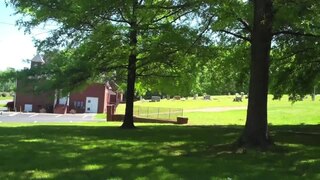
The Rosenwald School project built more than 5,000 schools, shops, and teacher homes in the United States primarily for the education of African-American children in the South during the early 20th century. The project was the product of the partnership of Julius Rosenwald, a Jewish-American clothier who became part-owner and president of Sears, Roebuck and Company and the African-American leader, educator, and philanthropist Booker T. Washington, who was president of the Tuskegee Institute.

The Hope Rosenwald School, also known as Hope School, is a former school at 1971 Hope Station Road near Pomaria, South Carolina. As a Rosenwald School, it served rural African-American children in the early 20th century.

Liberty Colored High School is a former high school for African-American students in Liberty, South Carolina during the period of racial segregation. It originally was called Liberty Colored Junior High School. The building is now a community center known as the Rosewood Center. It is at East Main Street and Rosewood Street in Liberty. The school was built in 1937 on the site of a Rosenwald school that had burned down.
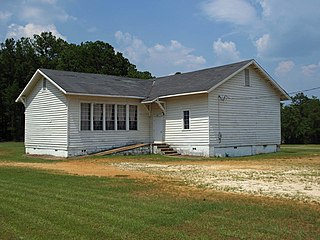
The Mount Sinai School is a historic Rosenwald School in rural Autauga County, Alabama, USA, northwest of Prattville. The one-story frame building was built in 1919 to the designs of W.A. Hazel to serve the local African American community. The money to build it was provided by the Julius Rosenwald Fund. The school was added to the Alabama Register of Landmarks and Heritage on February 2, 2001. It was subsequently listed on the National Register of Historic Places on November 29, 2001, as a part of The Rosenwald School Building Fund and Associated Buildings Multiple Property Submission.

The Tankersley Rosenwald School, also known as the Tankersley Elementary School, is a historic American Craftsman-style school building in Hope Hull, Alabama, a suburb of Montgomery. This Rosenwald School building was built in 1922 to serve the local African American community. The money to build the school was provided, in part, by the Julius Rosenwald Fund. It was added to the Alabama Register of Landmarks and Heritage on June 26, 2003, and to the National Register of Historic Places as a part of The Rosenwald School Building Fund and Associated Buildings Multiple Property Submission on January 22, 2009.

Mount Carmel A.M.E. Zion Church & Campground is a historic African Methodist Episcopal Zion camp meeting grounds in Heath Springs, South Carolina, Lancaster County, South Carolina. It was established in 1866 and consists of a complex of approximately 55 small "cabins" or "tents" and the brick church of Mt. Carmel A.M.E. Zion Church is located in the general form of a rectangle. Mount Carmel A.M.E Zion Church Campmeeting starts every year on the first Wednesday in September, and last for 4–5 days. An "arbor," or open-air structure, is located in the center of the complex, where music, gospel singing, praise and worship, preaching and teachings are held. People come to worship, fellowship, network, and eat food from as far as New York City, NY to Orlando, FL. There is also a section on the grounds for vendors. The majority of the cabins are small frame, some are two story cabins for larger families made from concrete block and wooden structures. Also on the property is the church cemetery.

Mt. Zion Presbyterian Church is a historic Presbyterian church located near Bishopville Lee County, South Carolina. It was built in 1911, and is a linear gable-front, temple-form, two-story brick building in the Neoclassical style. Set upon a raised brick foundation, the building's most imposing feature is its tetrastyle portico featuring a full-width masonry stair with cheek walls and monumental limestone columns and pilasters of the Ionic order. Directly to the rear of the church building is a small, one-story lateral-gabled frame building, constructed in 1851 as Mt. Zion's Session House.

The Mt. Olive Rosenwald School, on Bradley Rd. 45 in Mt. Olive, Bradley County, Arkansas is a wood frame Colonial Revival schoolhouse built in 1927. It is one of five buildings in the county that was funded by The Rosenwald Fund, established by philanthropist Julius Rosenwald to further the education of rural African Americans. It is not known when the building ceased to be used as a school, but classes were offered as late as 1949.
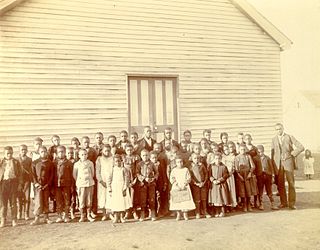
Cadentown School in Lexington, Kentucky was a primary public school for black children in the segregated Fayette County Public Schools from about 1879 to 1922. The building that originally housed Cadentown School, located at 705 Caden Lane, is no longer extant. However, the Rosenwald Fund School is listed on the National Register of Historic Places in Fayette County.

Lincoln School, also known as the Lincoln Consolidated Rosenwald School, is a former African-American school in Pikeville, Tennessee, that is listed on the National Register of Historic Places.
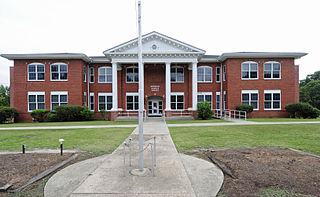
Old Batesburg Grade School, also known as Batesburg Elementary School, is a historic elementary school building located at Batesburg-Leesville, Lexington County, South Carolina. It was built about 1912, and is a two-story, brick Neo-Classical school building with a central tetrastyle portico and flanking pavilions. The central portico has four colossal Tuscan order columns. An auditorium is located at the rear of the building. Wing additions were added about 1945. It was the town's first public school, housing grades 1–11.

Pine Grove Rosenwald School, also known as Pine Grove Colored School, is a historic Rosenwald school building located at St. Andrews, Richland County, South Carolina. It was built in 1923, and is a one-story, rectangular gable-front frame building. Its layout is a variant of the two-room schoolhouse and features large banks of tall narrow windows.

The Catawba Rosenwald School is a historic school building at 3071 South Anderson Road United States Route 21) in Catawba, South Carolina. It is a single-story wood-frame structure, built in 1924–25 with support from the Rosenwald Fund, to one of the fund's architectural plans. It served as a school for the area's African-American population from then until its closure in 1956. In 1960 the vacant building was moved within the same property to accommodate the widening of South Anderson Road. It is one of two surviving Rosenwald schools in York County. It is owned by the Rock Hill School District.

Lee County Training School, also known as the W. B. Wicker School, is a historic school building located at Sanford, Lee County, North Carolina. It is a one-story brick building dating to 1927 with additions in 1934 and 1949. The building is characterized by large windows alternating with pilasters and was built by contactor A.L. “Link” Boykin, a leading member of Sanford’s black community. Construction funds were provided in part by the Rosenwald Fund, conceived in the 1910s by Southern black leader and educator Booker T. Washington. The Rosenwald schools were built across the south for black Americans in the early 20th century. It served as Sanford and Lee County's African American high school until it was decommissioned as a high school in 1969. Until the year 2019, classes for grade school were last held at the school in the late 1980s. It was listed on the National Register of Historic Places in 2000.

The Courtland School is a historic Rosenwald school at 25499 Florence Street in Courtland, Virginia. It is a single-story clapboarded wood-frame structure, built to a standard two-teacher plan developed by the Rosenwald Fund for such buildings. It is covered by a bracketed metal gable roof, and has modest Craftsman styling. It was built in 1928, and served as a segregated school for area African-American students until 1963. It was then purchased by a community group for use as a community center.

The Gifford Rosenwald School is a historic school building at 6146 Columbia Highway in Gifford, South Carolina. It was built in 1920 with funding from the Rosenwald Fund for the education of African Americans. Its design is not based on standard Rosenwald plans, but on a standard two-room plan published by state Board of Education. Originally segregated to African Americans it was integrated in 1958.

Lincoln Heights School was a historic six-teacher Rosenwald School. Built-in 1924, the buildings of the school are now listed with National Register of Historic Places for its significance in education of African American children across Wilkes County, North Carolina.

Carroll Rosenwald School is a historical school building located at Rock Hill, York County, South Carolina.
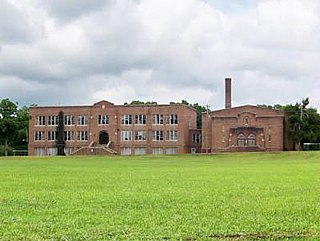
Mt. Zion Institute High School is a historic school complex located at Winnsboro, South Carolina.























